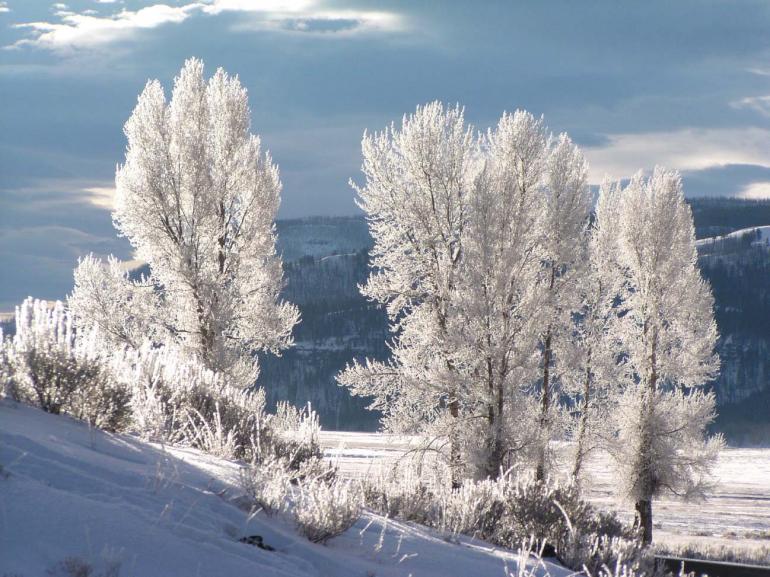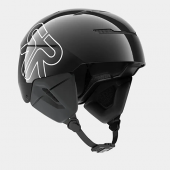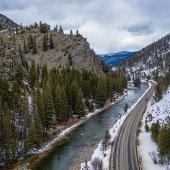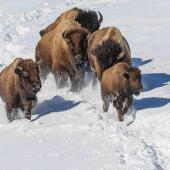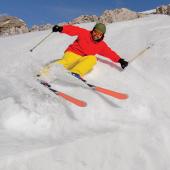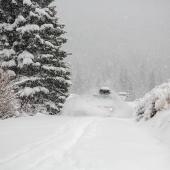Winter Safety Tips
Few things in Montana have the power to get an adventure lover’s blood pumping and adrenaline racing as much as a field of fresh powder or an undiscovered frozen waterfall that begs to be climbed. But few things also have the power to be so potentially dangerous.
People from all over the world flock to southwest Montana at the first snowfall, hoping for stories of mountains conquered and ice faces climbed to share with the folks back home, but very few people know the risks and responsibilities that come with winter adventure sports. Native Montanans roll their eyes when winter safety is mentioned, but only a fool would head into the backcountry without being armed with basic safety tips.
Avalanches are the main winter danger in Montana, but when you know the rules and how to read the snowpack, you can avoid a lot of the danger. Last year, there were 57 avalanches in southwest Montana caused by skiers or snowmobilers, according to the Gallatin National Forest Avalanche Center. Out of those, 12 people were buried and five died from injuries. The idea of an avalanche shouldn’t scare you away; it should make you proceed with caution.
Though the rules may vary by sports, everyone agrees: go with someone you trust. “In case of an avalanche, rescuers have a small window of time to dig someone out,” says Doug Chabot, director of the Gallatin National Forest Avalanche Center. “If a friend or buddy gets buried, they basically have one shot, and it’s you. If you’re the one buried, you better hope your friend knows what to do.” Don’t head out into the backcountry alone—it’s always better to be with someone in case of an emergency.
For backcountry skiers, snowboarders, and snowmobilers:
• Watch the weather before you go. There’s a saying around Bozeman: “If you don’t like the weather, stick around for an hour and it’ll change.” Especially in the winter, the weather can be unpredictable. Keep an eye on the daylight; shortened hours have caught many people off guard when they were out. “People get stranded more than anything because of the weather,” Chabot adds. “In the summer, it’s not so bad—they’ll just be uncomfortable stuck outside at night. But in the winter, it gets serious, and you’re dealing with the potential of frostbite or hypothermia.”
• Have your route planned, and know your options. Take along extra gear, if space permits. Extra gloves and goggles come in handy.
• Check avalanche conditions for the area you’ll be in. The Avalanche Center gathers information on 10,000 square kilometers of backcountry land in southwest Montana, and daily updates are available. Call the Bozeman-Livingston-West Yellowstone-Gardiner hotline at 587-6981, or the Cooke City hotline at 838-2341, or check out the Web site at www.mtavalanche.com. “We try to get out as much information about the snowpack as we can, then let people make an educated decision about safety when they’re outside,” Chabot explains. “Just like anything, snow conditions can get a little crazy sometimes. If you only ski once a week, it’s hard to keep up with snow conditions.”
• Take a class to learn basic safety techniques and what to be on guard against. Always carry a shovel, a snow probe, and an avalanche transceiver—and know how to use all three.
• Be on guard against overenthusiasm. “Lots of time, avalanches are triggered after we have a big storm,” Chabot notes. “People will head up the mountain and disregard warning signs. Because they’re so excited to be out, they have blinders on to potential danger.”
For ice climbers:
• Climb within your limits. According to Joel Lee at Barrel Mountaineering, the biggest mistake climbers can make is to push themselves beyond their level of technical ability. “Everyone performs at a different level, just like any sport,” Lee says. “Knowing that level is extremely important.”
• Find a good guidebook and learn how to decipher the ratings of each icefall. “The ratings in climbing are relative,” Lee explains. “If you’re climbing at the edge of your ability, it’s going to be the same for a beginner or an advanced climber.”
• Have the proper gear—helmets are essential. Know how to use an ice axe, crampons, and ice screws, and know how to keep from getting hurt by your equipment in case of a fall.
• Learn how to rest well in the middle of a climb. Being able to spot a good area to rest is important for keeping your energy level high and your senses alert.
• Be aware of your surroundings, and know the snowpack of the area. “Avalanches have as much potential danger for a climber as the icefall itself,” says Lee. “Most climbers don’t use an avalanche beacon, but if you’re climbing in a drainage, you are right in an avalanche’s path.”

